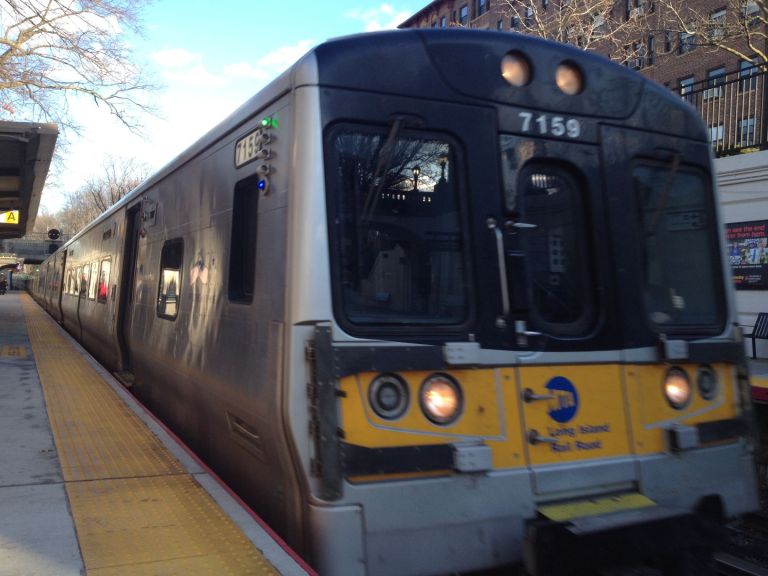
Monday’s deadline to submit comments for an environmental study of the Long Island Rail Road’s third track project is just the beginning of an “unprecedented” public outreach effort, the Metropolitan Transportation Authority said.
More than 1,000 people attended six hearings May 24 and 25 on the 9.8-mile, $1.5 billion proposal to add a third track to the LIRR’s Main Line between Floral Park and Hicksville. The MTA is still reviewing the comments it received during the five-week scoping period, in which planners aimed to outline a full environmental study.
“The recent comment period was only the first — not the last — opportunity for the public to weigh in on this project to improve service, safety and quality of life for riders and local communities alike,” project spokesman Shams Tarek said. “We will continue this unprecedented outreach effort throughout the entire life of the project.”
The comments submitted at the hearings, through the project’s website and at a public information center at the Mineola LIRR station will be incorporated into a final outline of an environmental study planners will take up later this year, officials have said.
The MTA released a draft scope May 5, outlining plans to evaluate the project’s potential impacts on business, traffic, noise and other local concerns. It also detailed plans for eliminating the seven street-level railroad crossings along the corridor, a promise from Gov. Andrew Cuomo that some see as an incentive for local communities.
Project officials have said more hearings will follow the release of the draft environmental study, for which there is not a set date. Outreach will continue as the final scope and the study are developed, the MTA said, and residents can still submit comments by mail, at the Mineola station and through the website, amodernli.com.
State, MTA and LIRR officials have held more than 150 meetings with officials and local leaders in New Hyde Park, Floral Park, Mineola and other affected communities to develop plans for the crossings and address concerns, the MTA said.
Scott Strauss, mayor of Mineola, said planners have been responsive and receptive to concerns since Cuomo announced the project in January.
But he said it remains to be seen whether the LIRR will stick to the timeline the scope outlines. He will be evaluating the crossing projects’ potential impact on Mineola’s downtown businesses and apartment complexes in particular, he said.
“We have our concerns that we need to have addressed and we’re just going to wait, and we’re going to watch, and we’re going watch it carefully,” he said.
The third track would take three to four years to install, and each crossing project would take six to nine months, the scope says. Cuomo has proposed expediting the project with a private “design-build” contract, one of many efforts he’s made to distinguish his proposal as less invasive than the MTA’s 2005 plan.
New Hyde Park Mayor Robert Lofaro said last month that 1,500 people spoke at hearings on that project, which was abandoned in 2008.
Critics have said the scoping process was rushed compared with the old project’s 90-day comment period, and that the public did not have enough information before the hearings.
About three dozen officials called on Cuomo last month to release more specific details about the plan, such as where the track will go and where construction will be staged.
Some of the eight villages along the Main Line have retained a Manhattan environmental law firm, Beveridge & Diamond, as legal consultants for the project, Strauss said. Mineola is not one of them, he said, but the village has hired an urban planner to review any plans or other documents it receives.
Strauss said he hopes planners will give more time for public feedback on the environmental study so officials and residents have sufficient time to digest it.
“There’s one shot at getting this right, and it’s got to be done right, and we have to take all of these little things into consideration, and what the state might think are little things, to me, are big things,” he said.
The environmental study will include the details officials asked for, the draft scope says, and will say how the project could mitigate concerns about noise, vibrations and traffic impacts that residents have voiced.
The third track’s scoping period was longer than those for the Tappan Zee Bridge, the Second Avenue Subway and the new World Trade Center, Tarek said. Project officials have said the public outreach far surpasses what is required under state environmental review law.






